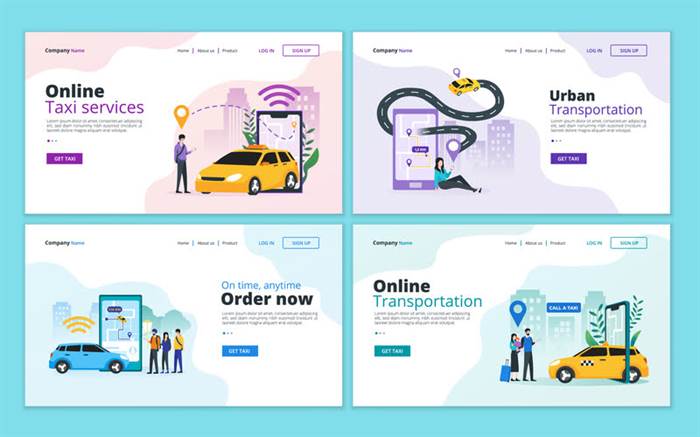Content
SaaS platforms make software available to users over the internet, usually for a monthly subscription fee. IaaS cloud servers are typically offered to businesses over the internet, whether through a dashboard or an API, ensuring users have complete control over their computing infrastructure. Cloud-based services have transformed how businesses have worked, allowing them to use IT infrastructures, platforms, software and applications via the Internet and online hotspots. Today, Heroku is part of the broader Salesforce Platform of developer tools, supporting a wide range of languages and thousands of developers who run applications on it. In practice, using Heroku involves building on a common runtime deployed in virtualized Linux containers—or dynos, as Heroku calls them—spread across a dyno grid of AWS servers. It was designed to support the development and hosting of web applications in Google-managed data centers.

Below the PaaS are the infrastructure – including infrastructure as a service – and server layers. For added security, the FortiGate virtual machine is available for development teams using the Google Cloud Platform. It helps enterprises maximize the scale and flexibility of the public cloud by adding the security, control, and visibility afforded by infrastructure that will normally be on-premises. Because an application is built using the PaaS vendor’s tools, it can be difficult to switch to another provider, especially for large, complex applications. If a development team intends to bring its development off a PaaS platform, they may need to rebuild portions of their application.
Platform as a Service (PaaS): Definition, Examples, and Advantages
This type of environment isn’t always suitable, whether for the sake of regulatory compliance or security. As such, private clouds can also be used, providing IT with more control over the management and security of a cloud environment. In these cases, software or platforms make use of both public and private environments. A PaaS product can also facilitate collaboration between geographically distant team members, allowing them to access the same development environment from separate locations.

Enterprises that choose IaaS do not need to buy any additional hardware or equipment. Everything is delivered virtually through the cloud, and there is nothing physical to maintain. Platform-as-a-Service is a method of delivery in which an organization’s developers can access software and tools via the web rather than on their local machines or computing https://globalcloudteam.com/ environment. Because the platform is delivered via the internet and stored in the cloud, PaaS frees software development teams from having to worry about software updates, storage, or infrastructure. PaaS providers typically price their services using a pay-per-use model. But usage can be calculated in different ways, depending on the vendor.
What is PaaS? Platform as a service definition and guide
Most platforms provide some of the coding for the applications, allowing developers to create new applications much quicker. Other benefits include agility, efficiency, cost savings, and simplicity. PaaS does not typically replace an organization’s entire IT infrastructure; rather, it helps organizations access key services with minimal start-up costs and reduced time to deployment. While customers can run legacy apps in the cloud, the infrastructure may not be designed to deliver specific controls to secure the legacy apps.
- Some providers even offer more services beyond the virtualization layer, such as databases or message queuing.
- As with other cloud services such as infrastructure as a service and software as a service , a PaaS is typically accessed over the internet but can also be deployed on-premises or in a hybrid mode.
- Businesses need to cover their bases and take advantage of all the market opportunities to strive and grow.
- Cloud-based services have transformed how businesses have worked, allowing them to use IT infrastructures, platforms, software and applications via the Internet and online hotspots.
- Benefits of using a PaaS environment include offloading the responsibilities of maintaining servers, keeping infrastructure software updated, and having to set up a custom platform upon which to build your app.
- For managed offerings, a PaaSprovider hosts the hardware and software on its own infrastructure and delivers this platform to the user as an integrated solution, solution stack, or service through an internet connection.
These platforms offer compute and storage infrastructures, as well as text editing, version management, compiling and testing services that help developers create new software quickly and efficiently. A PaaS product can also enable development teams to collaborate and work together, regardless of their physical location. At one end of the spectrum, IaaS allows customers to manage their own fleet of virtual servers, which includes responsibility for the application runtime environment, operating system, and middleware. On the other end, SaaS offerings give customers “no-code” tools for creating apps in a highly structured environment. IaaS is helping businesses to quickly get access to new cloud computing solutions and cloud storage needs.
PaaS vs IaaS vs SaaS
Unlike IaaS vendors, PaaS vendors are in charge of runtime, middleware, and operating systems. At the same time, customers who utilize PaaS can still handle data and apps, as opposed to SaaS customers, who do not have to manage anything. PaaS works well for small businesses and startup companies for two very basic reasons. First, it’s cost effective, allowing smaller organizations access to state-of-the-art resources without the big price tag. Most small firms have never been able to build robust development environments on premises, so PaaS provides a path for accelerating software development.

They also need to check if users can access the required data and systems. Also, the smooth functioning of the software and hardware integrations under the PaaS platform needs to be checked and verified. MPaaS is a PaaS that simplifies application development for mobile devices.
Ensure platform security
The upgrade from G Suite came as a result of a more integrated experience across Google’s broader suite, which allowed its customers to better connect with their various tools. They are typically ready-to-use and run from a users’ web browser, which allows businesses to skip any additional downloads or application installations. PaaS provides that platform for software developers to create, allowing them to concentrate on the software itself instead of any external issues. Merchants are able to pay for a hosting plan that meets their own needs without the cost of maintaining their own physical servers. The merchant is still responsible for installing and managing updates to their Magento software.
EC2 users do not own the physical servers — AWS provides virtual servers. Google App Engine provides web app developers and enterprises with access to Google’s scalable hosting and tier 1 internet service. The App pros and cons of paas Engine requires that apps be written in Java or Python, store data in Google BigTable and use the Google query language. In this sense, each software is based on a platform for which an infrastructure is required.
Fun Facts About Data Analytics
The first public platform as a service was Zimki, launched by Fotango, a London-based company owned by Canon Europe. It was developed in 2005, had a beta launch in March 2006 and a public launch at EuroOSCON in 2006. IT administrators might be involved with PaaS management, taking responsibility for PaaS setup, configuration, security and monitoring from the user/customer perspective.






